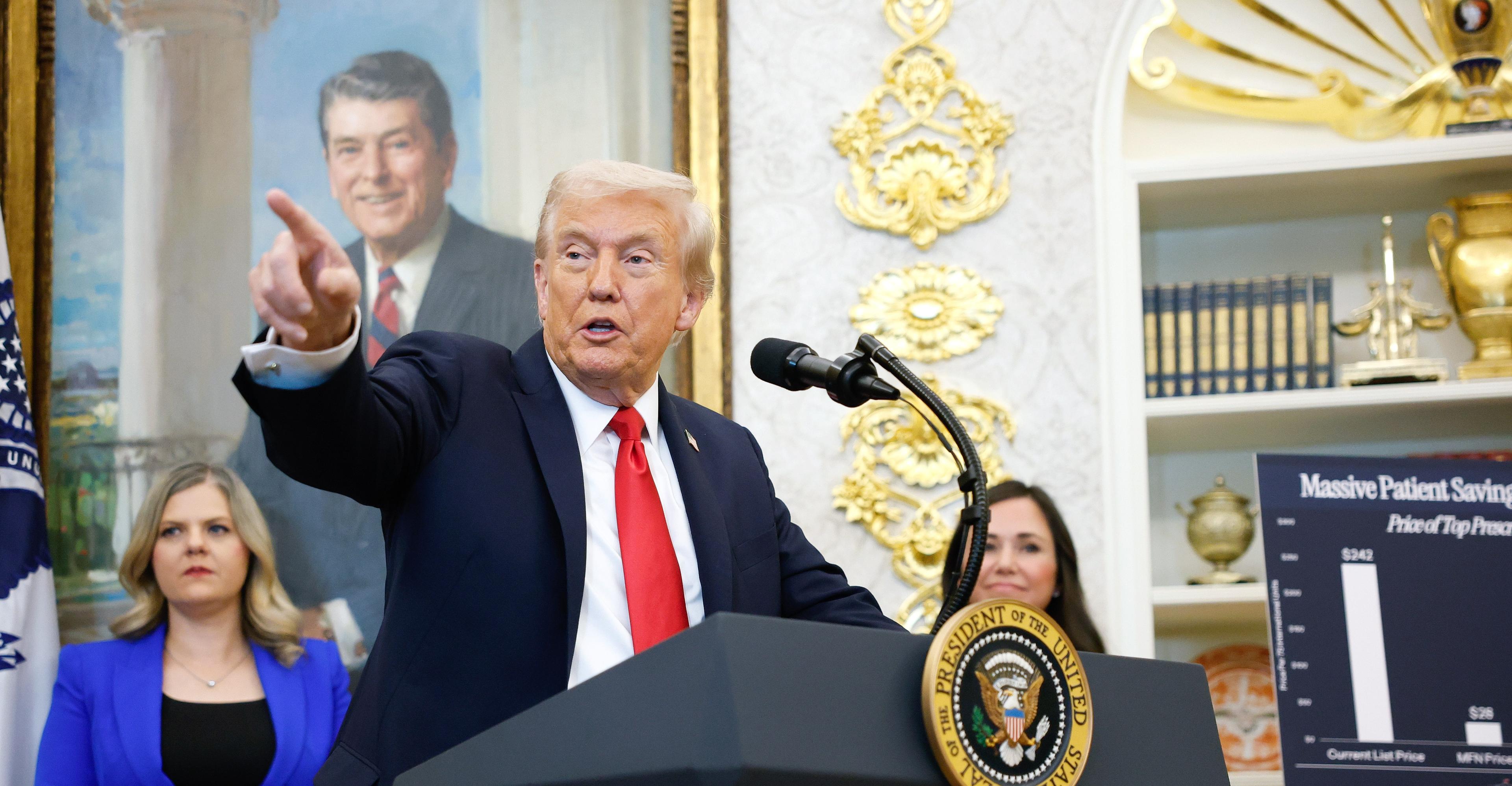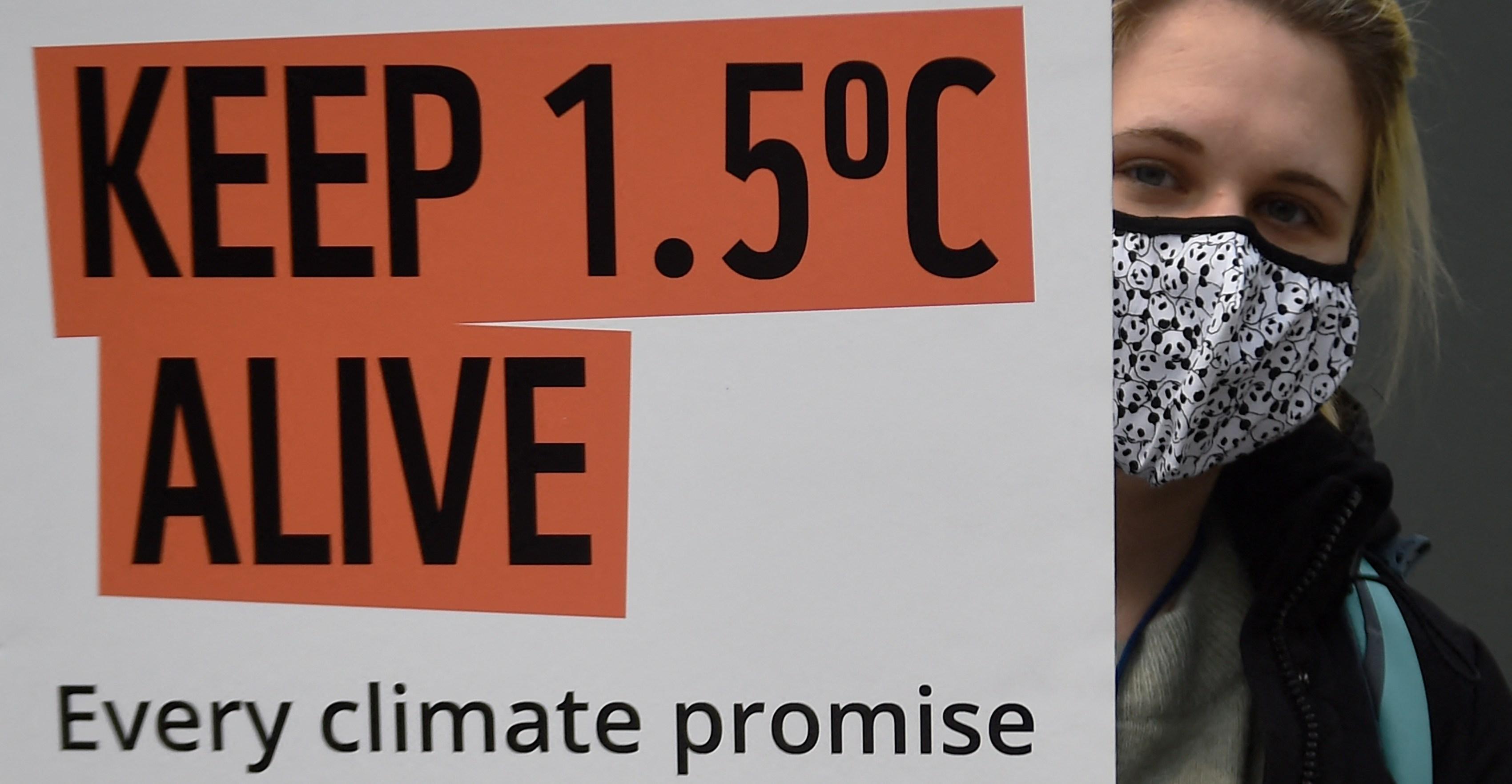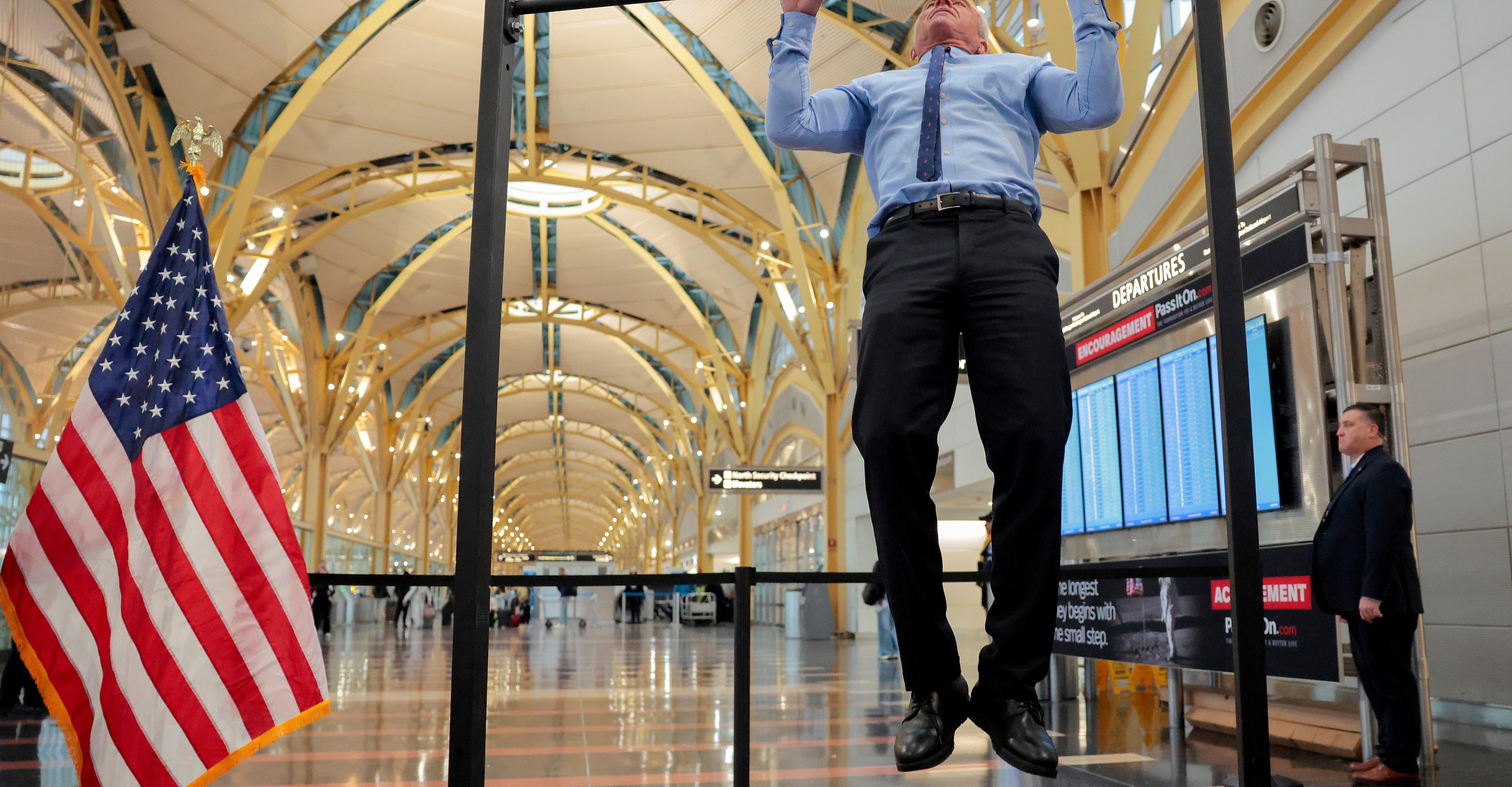President Joe Biden’s economic record is a bit like a certain orange-hued ex-president: It’s perpetually on trial. For years, politicians and commentators have been arguing over the merits of the Biden-era economy. And the question of whether Americans have p…

Published ایک سال قبل on جون 28 2024، 12:00 شام
By Web Desk

President Joe Biden’s economic record is a bit like a certain orange-hued ex-president: It’s perpetually on trial. For years, politicians and commentators have been arguing over the merits of the Biden-era economy. And the question of whether Americans have prospered under the president’s watch is certain to feature prominently in his Thursday night debate with Donald Trump. The answer to that question, though, may ultimately hinge on which Americans we’re talking about. Any set of economic policies and developments will inevitably impact different sectors, workers, and regions differently. Some Americans are indisputably better off today than they were in January 2021. Others are not. Specifically, the real winners of the Biden economy have been 24-year-old student debtors who lost their jobs during the pandemic and now work in hospitality, own a house in Tampa Bay, Florida, live in Minneapolis, have savings in an S&P 500 index fund, lease an electric vehicle, and hate fast food. This is not to say that only people who fit that elaborate description have prospered since January 2021. But the closer an American comes to possessing that odd assortment of characteristics, the more likely they are to have benefited from virtually all of the Biden era’s major economic changes. To see why this is the case, consider seven ways that the US economy has changed under Biden. 1) Unemployment rapidly fell When Joe Biden took office, America’s unemployment rate sat at 6.4 percent. By the end of his first year in the White House, it had fallen to 3.9 percent, roughly equal to its pre-pandemic level. The pace of this labor market recovery was extraordinary. After the Great Recession of the late aughts, unemployment didn’t return to its pre-crisis level for more than nine years. After the Covid recession, unemployment returned to its pre-pandemic mark in just two. Like most features of the Biden-era economy, the president cannot claim full responsibility for this development. In 2020, the Trump administration and the House’s Democratic leadership united behind historically robust relief spending that laid the foundation for a swift recovery. But Biden’s policies accelerated job growth. And this was no accident. The White House chose to prioritize rapidly restoring full employment over minimizing the risk of inflation. To appreciate how big a premium Biden put on a speedy labor market recovery, consider the state of the economy in early 2021. By the time his American Rescue Plan was drafted, US households were already $12 trillion wealthier than they had been before the pandemic, and boasted more disposable income and less debt than they did at the peak of the Trump-era expansion. Unemployment was already recovering at a healthy pace. --- Facts on the Ground This is part of Vox’s series exploring the realities of American life and policy as the presidential campaign ramps up. Read more: * What two years without Roe looks like, in 8 charts * Biden’s border record: Trump’s claims vs. reality * Why do Americans always think crime is going up? --- The administration could have looked at this state of affairs and concluded that only a modest additional Covid relief bill was warranted. After all, the unemployment rate was 2 full points lower in March 2021 than it had been in February 2009, when President Barack Obama and congressional Democrats authorized only $787 billion of stimulus spending. Nevertheless, Biden proposed a $1.9 trillion relief bill, including $1,400 checks for most Americans, enhanced unemployment benefits, and a temporary child allowance for most families, among myriad other economically stimulative measures. This injection of cash into Americans’ bank accounts boosted consumer spending and, thus, job growth. It is impossible to know exactly how much that legislation contributed to Biden-era inflation. In hindsight, it’s clear that the economy’s reopening was all but certain to trigger an inflationary surge, no matter what Biden did in office. After all, developed countries the world over witnessed historically large bursts of inflation in 2021 and 2022, despite enacting significantly less fiscal stimulus than the United States. Regardless, America bought itself considerable economic benefits with all that relief spending. The Biden-era US did not suffer significantly higher inflation than the European Union, but it did enjoy a much stronger rate of economic growth. As Martin Sanbu noted in Financial Times, in 2023, the US economy was only 1 to 2 percent smaller than it would have been had its pre-pandemic economic trajectory continued uninterrupted; the European economy, by contrast, finished the year 5 percent below its pre-pandemic trend. This said, it’s undoubtedly true that Biden’s fiscal policy centered the interests of the unemployed, at the cost of somewhat higher inflation. 2) Real wages rose sharply for young workers, especially in low-wage sectors The question of whether American workers as a whole are better off now than they were when Biden took office is a complicated one. By conventional measures, real weekly earnings — which is to say, earnings after inflation is taken into account — are about 2 percent lower today than they were when Biden took office. But that figure is misleading. The Labor Department’s wage data measures median pay among Americans who have jobs at a given moment in time. For this reason, changes in the composition of the labor force can raise or lower “real weekly earnings,” even if no single worker in the economy has actually received a raise or pay cut. For example, if companies throughout the economy lay off a bunch of their lowest-paid workers, then real wages will rise, even if pay for all remaining employees remains the same. And something roughly like this happens in every recession: Low-wage workers are the first to be fired and last to be rehired. Thus, real weekly earnings skyrocketed at the start of the pandemic, even though very few employers were actually increasing worker pay in the middle of a recession. Conversely, as low-wage workers regained their jobs during Biden’s first year in office, real weekly earnings appeared to fall — even before inflation took off — merely because the composition of the workforce was changing. A better measure of wage trends comes from the Atlanta Federal Reserve. The central bank tracks the wages of the same individual US workers over time. And as the labor economist Aaron Sojourner has shown, the Atlanta Fed’s data suggests that average hourly wages have grown by more than consumer prices since Biden took office. Still, no measure of real wages is perfect. And once the impact of interest rates is taken into account, the picture can get a bit murky. But such ambiguity disappears for certain subsets of the labor force. For example, American workers under 25 have seen their wages soar during the Biden era. Wages for US workers between the ages of 16 and 24 were growing at a 7.3 percent rate in January 2021, according to the Atlanta Fed. By October 2022, young workers’ wages were rising at a 13 percent clip, and were still advancing by an 8.6 percent rate in March of this year. In other words, throughout the Biden presidency, young workers’ wages have grown much faster than prices. Similarly, workers in the bottom 25 percent of America’s income distribution have seen much stronger wage growth than higher earners, according to the Atlanta Fed’s data. And this trend is also reflected in data on wages in America’s leisure and hospitality industry, the nation’s lowest-paid sector. Even using the Labor Department’s data (which likely underestimates wage growth due to the compositional issues mentioned above), pay for hospitality workers has far outpaced inflation during Biden’s time in office. By contrast, workers in the top quarter of America’s income distribution, and those over age 55, have seen exceptionally slow rates of income growth in the Biden era. Taken together, these trends translate into a steep reduction in pay inequality. 3) Homeowners prospered (at renters’ expense) The Biden era has been a great time to own a home, but a lousy one to buy or rent a residence. Between the president’s inauguration and this May, the typical home price in the United States increased by 46.6 percent, according to Zillow’s home value index. One person’s rising home value is another’s declining affordability. And for would-be homebuyers, the burden of high home prices has been compounded by a rapid jump in mortgage rates. When Biden took office, the average rate on a 30-year fixed mortgage was 2.77 percent; today, that figure is closer to 7 percent. As a result, the median monthly mortgage payment jumped by roughly 50 percent between 2021 and 2023, according to an analysis from Bank Rate, a financial services company. The president does not set interest rates. The Federal Reserve determines borrowing costs. Yet the central bank hiked rates in recent years in response to rising inflation (by increasing borrowing costs, the Fed aims to discourage debt-financed spending and investment, which theoretically slows the growth of prices). Therefore, to the extent that Biden’s fiscal policies contributed to inflation, he bears partial responsibility for rising interest rates. Meanwhile, rents have soared. Since Biden took office, the average rent in a US city increased by roughly 21 percent, according to the Bureau of Labor Statistics. Of course, trends in shelter costs vary widely by location. In the Biden era, rents and home prices have risen especially rapidly in the Sun Belt region. Between January 2021 and March 2024, home prices in Tampa Bay, Florida, surged by roughly 51 percent, while those in the Phoenix metro area appreciated by 40 percent. And rents have followed a similarly steep upward trajectory in both markets. By contrast, Minneapolis, Minnesota, saw only an 18.4 percent increase in home prices, and similarly modest rental inflation. In fact, according to a recent analysis from Zillow and Streeteasy, the typical rent in Minneapolis increased by only 13.5 percent between 2019 and 2023. For the most part, today’s housing affordability crisis has been decades in the making and thus has little to do with Biden’s policies. Restrictions on multifamily housing construction in major US cities have prevented America’s housing stock from keeping pace with demand. Meanwhile, millennials — now America’s largest generation — have entered their prime home-buying and childrearing years en masse, ditching roommates and seeking floorspace. Add in remote work, which has led to an increase in demand for square footage as professionals prefer at-home offices, and you end up with a severe housing crunch. The tools for alleviating that crisis exist. But they’re primarily available to local governments, which generally have sovereignty over zoning. Minneapolis relaxed restrictions on housing construction in recent years and has enjoyed relatively low housing inflation as a result. 4) The stock market boomed As of this writing, the S&P 500 is more than 42 percent higher than it was on the day Biden took office. Such growth pales a bit in comparison to that seen over the entire course of the Trump presidency, when the index grew by about 68 percent. But it still represents robust gains for investors. What’s more, the Biden-era stock market rally may have an unusually large impact on the broader economy. During the Covid pandemic, Americans dedicated a historically high percentage of their income to savings, as public health concerns rendered vacations, dining out, and all manner of other in-person leisure activities less appealing. And many plowed those savings into the stock market: Between 2019 and 2022, the percentage of US households that owned stocks jumped by 5 points to an all-time high of 58 percent. Combine equity gains with the Biden-era appreciation in home values, and US households in general — and high-income ones in particular — have seen their net worths grow considerably in recent years. When the value of a person’s assets rises, they tend to eventually increase their spending on goods and services. The Biden-era run-up in wealth has therefore likely helped the economy weather inflation, as consumers have been able to sustain high levels of spending by drawing on their savings, home equity, and capital gains — or else, merely by telling themselves that they can afford to spend more, given how good their 401(k) is looking. Indeed, according to an analysis from TD Bank, rising wealth explains between 15 and 30 percent of the increase in American consumer spending since the pandemic. 5) The green economy swelled In 2020, the US government and private investors collectively spent $102.5 billion on the green energy transition, according to BloombergNEF. Last year, that figure exceeded $200 billion. And when investments in the power grid are taken into account, total climate spending in 2023 hits $303 billion. This surge in green spending is a direct consequence of Biden’s Inflation Reduction Act (IRA), which provided generous subsidies to American producers of renewable energy and electric vehicles, among other low-carbon technologies. All Americans will theoretically benefit eventually from the green transition, which will lengthen our lives by reducing air pollution and render the Earth less inhospitable for our grandchildren by curbing global warming. But the IRA’s direct beneficiaries are principally American green technology makers, Sun Belt manufacturing workers, and climate-conscious consumers. As Politico noted last year, most of the green energy investments spurred by the IRA have been in Republican districts, with a highly disproportionate share concentrated in the American South. Meanwhile, under Biden, most Americans became eligible for a $7,500 tax credit on purchases or leases of electric vehicles. The law made a given vehicle’s eligibility for that tax credit contingent on where its various inputs were produced: To promote American manufacturing of EVs and their batteries, a certain (and steadily rising) percentage of a car’s inputs must be sourced from the US to qualify. But the eligibility requirements for purchased cars are stricter than those for leased ones, so Americans who leased an electric vehicle have done especially well in the Biden era. 6) Many student debtors saw their loan balances shrink Biden’s plan to forgive at least $10,000 in student debt for the vast majority of US borrowers was blocked by the Supreme Court last year. But his administration has successfully executed many smaller-scale acts of forgiveness that add up to a prodigious total. As of March, the administration had canceled roughly $167 billion of federal student loan debt, more than 10 percent of all such outstanding debt in the country. All together, 4.75 million borrowers have seen at least a portion of their student debt forgiven under Biden. 7) Fast food got pricier Precisely because pay for hospitality workers has surged, the cost of fast food has risen sharply. Between May 2020 and May 2023, hourly compensation at American limited-service restaurants jumped by 23 percent, according to the Bureau of Labor Statistics. Over the same period, fast food prices soared, rising 8 percent in 2021, 6.6 percent in 2022, and 6 percent in 2023, far outpacing the overall inflation rate. Tight labor markets — in which jobs are abundant and workers scarce — benefit Americans in their capacities as laborers. They give workers more bargaining power at their jobs and more freedom to ditch a bad gig without risking prolonged unemployment. This is especially valuable for workers who lack rare skills, face discrimination in the labor market, or require special accommodations. When labor markets are loose, employers can afford to pay meager wages to lower-level staffers, or pass over Black applicants, or refuse to make postings accessible to people with disabilities. When finding enough workers to satisfy customer demand is a struggle, however, firms have no choice but to pay higher wages, consider applicants of all races, and make positions accessible to a wider pool of workers. This is why the Biden era has been so good for low-wage workers. And it is also largely why the unemployment rates of Black and disabled workers have fallen to record lows during his tenure. But tight labor markets have less beneficial effects for consumers. Rising wages generally translate into higher prices, especially for goods and services that are labor-intensive. And strong demand for workers also means that many businesses are going to struggle with retention and hiring, and be understaffed as a result. Many consumers of fast food, child care, taxi rides, and other labor-intensive services have therefore found themselves paying more — often for lower-quality service — in the Biden era. For upper-middle-class consumers, whose educational backgrounds and special skills provide them with a modicum of bargaining power even in times of elevated unemployment, the trade-offs of tight labor markets might not be favorable. The Biden economy works well (albeit not for everyone) In my view, more expensive Big Macs are a small price to pay for higher growth, more worker power, and low unemployment. And I also think that the broader strengths of the Biden economy outweigh its weaknesses. Recovering from the pandemic was always going to be painful. Covid shuttered entire sectors of the US economy and disrupted factory production the world over. At the same time, consumers suddenly shifted their spending away from in-person services and toward manufactured goods, a development that producers weren’t prepared for. These disruptions had unavoidable economic costs. We could have paid those costs by immiserating America’s most vulnerable workers through a prolonged period of high unemployment. Instead, under Biden, we all chipped in to pay Covid’s toll through inflation while protecting the disadvantaged. I think this was a sound decision. But I understand why some older, high-income Americans — especially those who never lost their jobs during the pandemic, keep all their savings in cash, paid off their student debts long ago, own no home, love fossil fuels, and live off Taco Bell — might disagree.
More than 42mn children administered polio vaccination during final polio drive in Pakistan
- 3 hours ago
PM Shehbaz performs groundbreaking of Centre of Excellence for Autism
- 4 hours ago
UN experts raise objections on India's unilateral actions of May 7 inside Pakistan
- 4 hours ago
Gunman in Brown University shooting found dead, linked to MIT killing
- 4 hours ago
PMD to install Advanced Automatic Weather Stations
- 3 hours ago

The unexpected link between your diet and your anxiety
- 13 hours ago
ATC acquits SM Qureshi, awards 10-year sentences each to Dr Yasmeen, Ejaz Chaudhry in May 9 case
- 4 hours ago
Morocco beat Jordan 3-2 after extra time to clinch Arab Cup
- 4 hours ago

The looming showdown over IVF, explained
- 13 hours ago
Soccer legend Ronald debuts in Hollywood, to play key role in upcoming movie
- 3 hours ago

Gold prices plunge in Pakistan, global markets
- 4 hours ago

The mass shooting on Australia’s Bondi Beach, briefly explained
- 13 hours ago
You May Like
Trending








